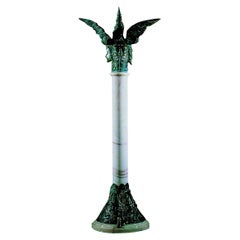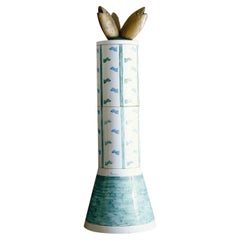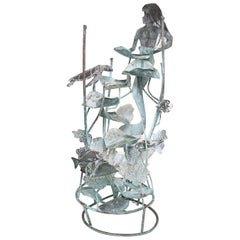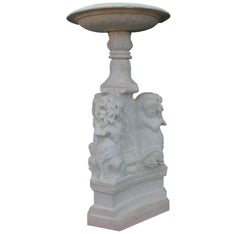Mirabili Building and Garden Elements
Known for its collaborations with some of the world’s most important artists, sculptors and designers, Italian furniture manufacturer Mirabili produces high-quality pieces that not only prioritize function but are also expressive objets d’art that are demonstrative of the company’s clear creative vision.
Famed Italian entrepreneur Sergio Cammilli (1920–2001), founder of radical modernist furniture company Poltronova in 1956, came up with an idea to focus on creating a collection of “usable furniture art” designed by notable architects and artists. In 1986, Cammilli’s vision was realized when he established Mirabili. He once explained that the company was a consortium of “well-known artists and designers selected for their particular gifts and their poetic world, lending an innovative and sensitive contribution to the cultural image of the habitat as ‘Art of Living.’”
Over the past few decades, Mirabili has attracted high-profile designers to create an eclectic range of pieces. For instance, the headboard of Italian multidisciplinary artist Luigi Ontani’s Heliondimio bed comprises a colossal carved wooden sun that is finished with gold leaf and “meets the gaze” of the carved crescent moon sculpture that appears on the foot of the structure. Other distinguished pieces include the leaf-like Foglia chair by Fabrizio Corneli, the TOTEM Clair de Lune sculpture by Ettore Sottsass, Carla Tolomeo’s Black Half-Moon silk and velvet sofa and Marco Lodola’s “playing card” contemporary art wall sculptures.
In 2002, Formitalia Luxury Group acquired Mirabili (now known as Mirabili Arte d'Abitare).
Mirabili has regularly exhibited at numerous art shows and fairs throughout Italy and the rest of Europe.
On 1stDibs, discover a range of vintage Mirabili decorative objects, wall decorations and seating.
1980s Italian Post-Modern Vintage Mirabili Building and Garden Elements
Marble, Bronze
1980s Italian Post-Modern Vintage Mirabili Building and Garden Elements
Bronze
1990s North American Mirabili Building and Garden Elements
Copper
Early 1900s English Baroque Revival Antique Mirabili Building and Garden Elements
Marble
1980s European Vintage Mirabili Building and Garden Elements
Ceramic
19th Century German Louis XV Antique Mirabili Building and Garden Elements
Ormolu
1870s American American Empire Antique Mirabili Building and Garden Elements
Bronze, Copper
1970s American Mid-Century Modern Vintage Mirabili Building and Garden Elements
Copper
Early 1900s French Antique Mirabili Building and Garden Elements
Stone
19th Century Spanish Louis XV Antique Mirabili Building and Garden Elements
Marble
19th Century Italian Baroque Antique Mirabili Building and Garden Elements
Carrara Marble
21st Century and Contemporary Modern Mirabili Building and Garden Elements
Cement
1850s English William IV Antique Mirabili Building and Garden Elements
Copper, Lead
16th Century Italian Renaissance Antique Mirabili Building and Garden Elements
Carrara Marble



